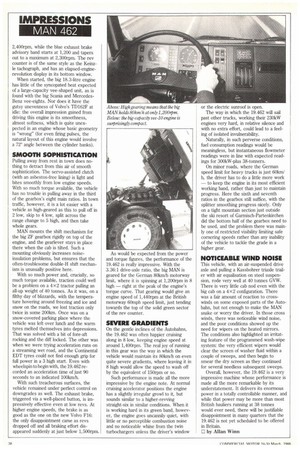VISUAL CLUE
Page 39

Page 40

If you've noticed an error in this article please click here to report it so we can fix it.
Inside the cab the story is much ti same. The cab is the normal wide (2,440nmi) sleeper version of the 1 and the only obvious visual clue to ent power is the rev counter, with green band starting at 1,000rpm ai ning to 1,700rpm, with the green 1 from 1,200 to 1,500rpm. The oran starts at 2,000 and runs to red at
2,400rpm, while the blue exhaust brake advisory band starts at 1,200 and tapers out to a maximum at 2,300rpm. The rev counter is of the same style as the Keinzle tachograph, and has an elapsed-enginerevolution display in its bottom window.
When started, the big 18.3-litre engine has little of the syncopated heat expected of a large-capacity vee-shaped unit, as is found with the big Scania and MercedesBenz vee-eights. Nor does it have the gutsy unevenness of Volvo's TD162F at idle: the overall impression gained from driving this engine is its smoothness, almost softness, which is quite unexpected in an engine whose basic geometry is "wrong" (for even firing pulses, the natural layout of this engine would involve a 72° angle between the cylinder banks).
















































































































